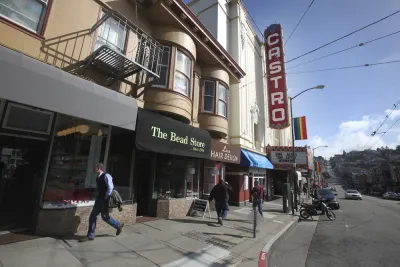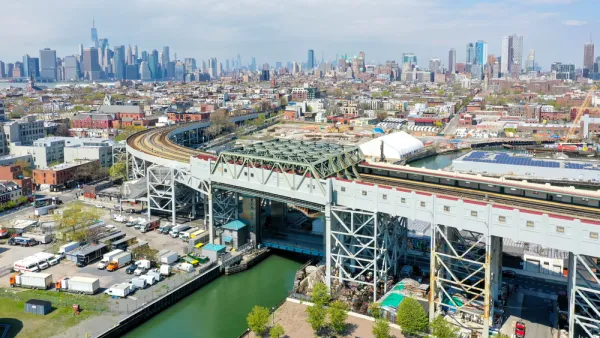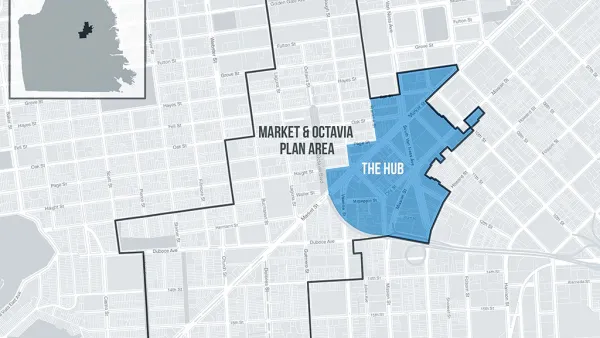Vast amounts of tech money have transformed the city's commercial spaces in unexpected ways.

Adrian Daub takes a closer look at the area around Church and Market streets in San Francisco to better understand the phenomenon of commercial spaces remaining empty after businesses have been priced out:
[Sparky’s diner] was first to go: in 2015 rent suddenly went up, the diner’s owner refused to pay, and Sparky’s was no more. Our usual ideas about gentrification suggest neighborhood standbys get replaced by fancy boutiques and brunch-centric eateries. Instead, after Sparky’s came … nothing. Elsewhere, too, long-term leases timed out, rents increased, and the old neighborhood hangouts disappeared.
The area has seen huge growth in the number of residents and upscale residential developments, but storefronts remain unoccupied, says Daub. "Developers make their money with luxury apartments aimed at high-salaried tech workers, while ground floor retail is an architectural and economic afterthought: giant spaces that any business would have trouble filling with life and justifying financially."
Daub points to California’s Proposition 13 and the cap on property taxes as a factor in this market dynamic. "Owners may pay Nixon-era property tax rates, while renting out those spaces at rates that have exploded in the last 40 years. They, too, can afford to let buildings sit empty."
San Francisco highlights the link between the technology industry and capitalism and the change that ingenuity and money can bring, says Daub. "But walk through parts of San Francisco today, and you get a different sense altogether: not an uncanny effectiveness, but a panicked swirl of homeless capital."
FULL STORY: Abandoned stores, empty homes: why San Francisco's economic boom looks like a crisis

Analysis: Cybertruck Fatality Rate Far Exceeds That of Ford Pinto
The Tesla Cybertruck was recalled seven times last year.

National Parks Layoffs Will Cause Communities to Lose Billions
Thousands of essential park workers were laid off this week, just before the busy spring break season.

Retro-silient?: America’s First “Eco-burb,” The Woodlands Turns 50
A master-planned community north of Houston offers lessons on green infrastructure and resilient design, but falls short of its founder’s lofty affordability and walkability goals.

Test News Post 1
This is a summary

Analysis: Cybertruck Fatality Rate Far Exceeds That of Ford Pinto
The Tesla Cybertruck was recalled seven times last year.

Test News Headline 46
Test for the image on the front page.
Urban Design for Planners 1: Software Tools
This six-course series explores essential urban design concepts using open source software and equips planners with the tools they need to participate fully in the urban design process.
Planning for Universal Design
Learn the tools for implementing Universal Design in planning regulations.
EMC Planning Group, Inc.
Planetizen
Planetizen
Mpact (formerly Rail~Volution)
Great Falls Development Authority, Inc.
HUDs Office of Policy Development and Research
NYU Wagner Graduate School of Public Service




























